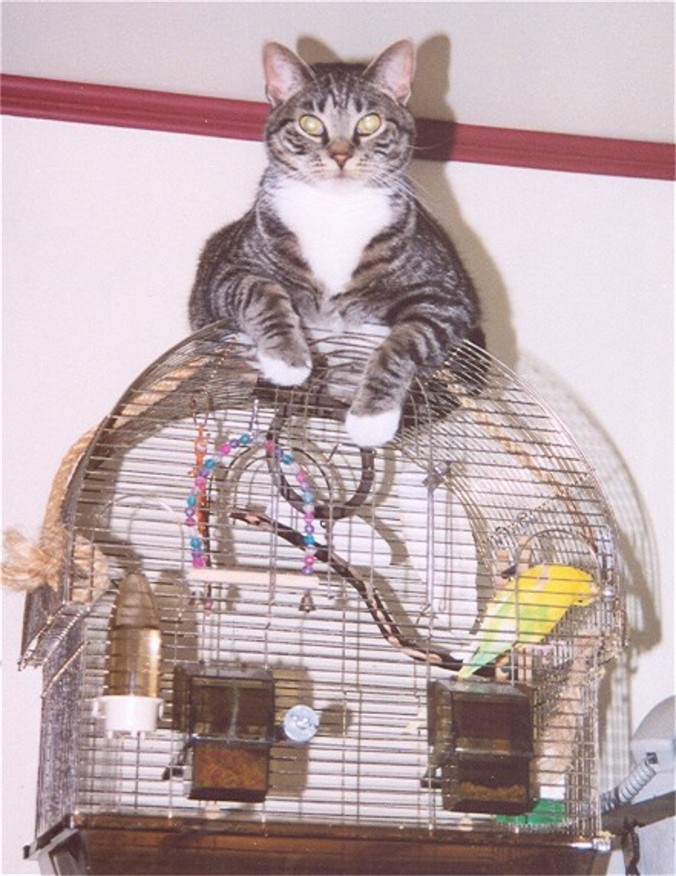Cats communicate in many ways. They use vocalizations, body language and spatial position to communicate.
For example, a cat will gently paw you to get your attention. While batting things around is a form of play, a hard swat without their claws out can be a warning. A swat with the claws out is a much more aggressive act, either in defense or as an attack. Of course there is the kneading action with their paws that cats do when they are happy.

(my cat who was taught not to bother the bird, note the bird is not afraid of the cat)
When a cat vocalizes a short meow is like a greeting, or a friendly “how are you doing?” A meow that is a bit louder and perhaps longer typically is a request for something, such as dinner or to get to a place that is inaccessible. A longer meow is a more demanding request, typically if you ignored the cat’s earlier request. A high pitch meow is a protest, such as if the cat does not like to be groomed or have its nails clipped. Then there is a long, almost sad meow that sounds as if the cat is confused.
If an old cat does this and seems to be lost or confused, it is time for an examination by your veterinarian. The cat may be suffering from or starting to get dementia. A hiss is usually a warning to move away from the cat. Purring is usually a sign of contentment but a cat that is in pain or stress will purr.
Facial expressions are important, including the ear set, eyes as well as the mouth. Flattened ears show that the cat is angry or frightened. Large dark eyes also can mean anger or fear. An opened mouth with a hiss is anger or fear and it can be difficult for a cat owner to tell the difference between anger and fear.
A cat’s tail is just as expressive as vocalizations. A happy cat will have its tail up and often with a small hook at the end. A swishing tail is a sign of annoyance and sometimes anger. Of course there are many positions in between the upright tail and the swishing tail. Some cats will appear to be contented but the tips of their tail flicks up and down or back and forth, it can mean that the cat is irritated. When some cats are very happy their tail will stand upright and shake with the hair at the base of the tail puffed out.
As most people know, when a cat is angry or frightened they will arch their back and raise the hair on their back and tail. The tail will usually be erect or curved down and sometimes tucked between their legs.
To help our cats understand us, we need to be consistent in our body language and tone of voice. You can train a cat if you are careful not to give the cat mixed signals. A treat with a happy face and voice will show a cat that you are pleased with their behavior. A firm no and a serious face will let them know that you do not approve of their actions.
Cats sometimes do not recognize our space. Therefore, if a cat gets on you, near you or goes where you do not want them to go, such as on the table at dinner time, you can give the cat a stern “no” and point to the floor while you gently push them away. It may take a few times but the cat will learn.
For behavior that you want, you can smile, tell the cat that it is good and give the cat a treat. The cat will learn that this is acceptable behavior. Of course, you can clicker train a cat. https://clickertraining.com/cat-training
With a little thought, planning, and careful observation, it is not as difficult to communicate with a cat or understand what they are trying to tell us as a person may think. Your cat will love you more for the effort and you will understand your cat better.
Love this! Thanks Susan. I can picture cats I have known in every sentence, it is a really informative blog!
LikeLike
I am glad you like it. I try to keep people informed and me up-to-date on my research. I am a few years away from retiring but want to stay current. Thanks for your encouragement.
LikeLike